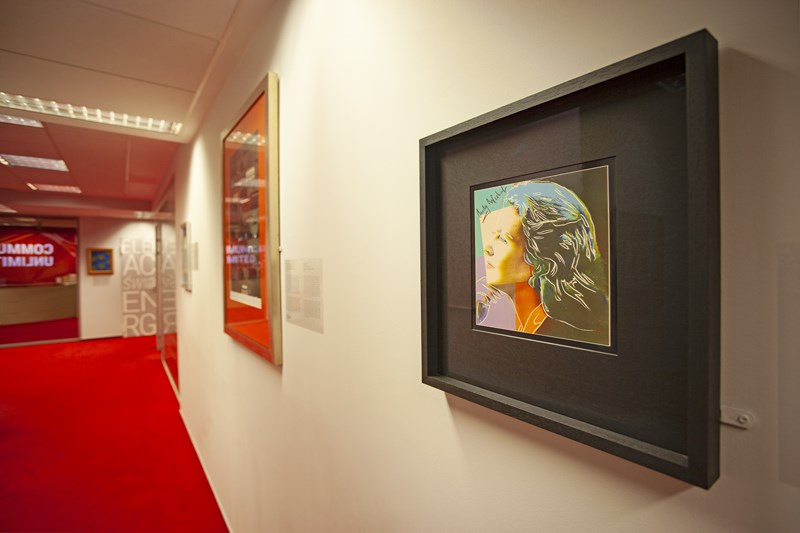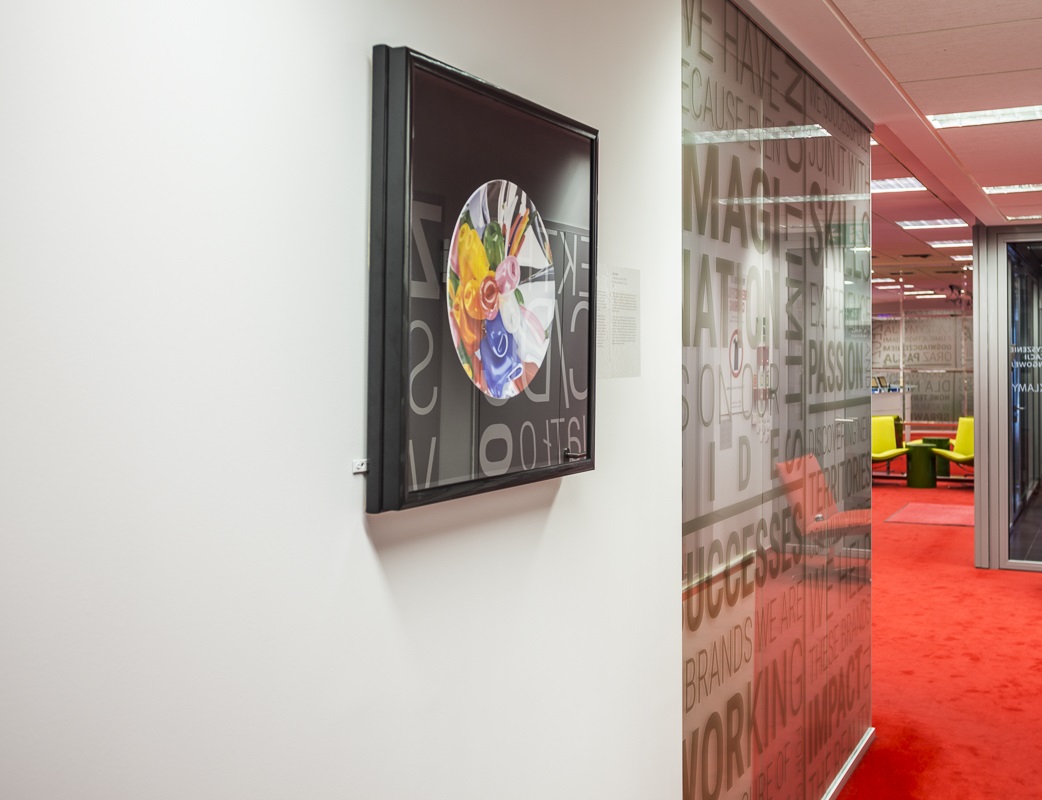With deep roots in the Polish art scene, Paweł Kowalewski has been building his art collection for 15 years. His collection consists of such names as: Marina Abramović, Jasper Johns, Andy Warhol, Jeff Koons, Zbigniew Libera, Dan Reisinger, Victor Vasarely, and Krzysztof Bednarski. He has a huge knowledge about the art market and realities of local art scene. He is also responsible for building a bridge between art and business in Poland.
LARRY’S LIST talked with Paweł Kowalewski, who shared how his focus on works on paper has allowed him to have no glass ceiling in purchases, his wish list with Baselitz, Immendorff, Penck or Rothko, why artificial divisions in art annoys him the most, and his admiration for Jasper Johns and Robert Rauschenberg who have inspired and shaped him the most.

Collecting
What made you want to start collecting art? What is the main motivation behind your collecting?
Love of art.
When did you fall in love with a piece of art? What was it?
Falling in love with works of art is a problem which I’ve been dealing with since I was born. However, it was the moment when I was finally in a position to start owning them that was a breakthrough for me. This love affair started quite a long time ago, about 30 years in fact, but I’ve only been able to realise my dream of becoming a collector for 10 years now. There’s a whole list of works which have delighted me, hypnotised me and caused my heart to beat faster. Amongst others they are works by Zbigniew Libera, Marina Abramović, Krzysztof M. Bednarski and Jasper Johns. In the case of Johns, this is a kind of infatuation like a naive child with his master, but I’m sure this won’t be the last time that I fall in love with an artist or a work of art.

Why is it important for you to focus on Polish artists in your collection?
It’s actually not the case that I only concentrate on Polish artists when collecting. I simply have easier access to them, and this increases the chances of buying something. I follow the local and foreign markets with equal attention, looking for good deals. My overall aim as a collector is that the Polish artists whose work I own can be grouped with the best artists of the world.
You also collect some renowned international artists. How do their works interact with those by Polish artists?
I believe that Polish art deserves to directly interact with the world, and what’s more, from this kind of confrontation it comes out very well. This is one of the ideas behind the building of my collection. Synergy brings enormous energy and power. Showing a variety of contexts and nationalities, with changing shared usage of differing techniques and media creates a bigger effect than a single collection of similar things can ever do.

Is there any particular type of art that has consistently attracted you, or anything that unites all the works you have acquired?
My collection consists mostly of works created on paper. This was a conscious decision to go in this direction as it means that I can afford to buy really big names. In this area there’s no glass ceiling for me, a world of art which would be beyond my reach. As regards my process of selecting works and taking decisions, the work always has to have something to say. I can’t stand empty pictures, objects which don’t communicate anything to me. It doesn’t matter whether it’s a figurative or abstract painting, photograph or sculpture, it has to tell a story, have some universal sense and also a strong message. If I can’t find this then for me this work of art is purely decorative and as such is of no interest to me.
What were the first and the latest artworks you purchased?
The first work I bought was direct from the artist. It was a drawing by Włodek Pawlak, entitled “The handle endings of ancient spoons”. And the most recent I successfully bid for at an auction online, which I regularly follow, was “Zeig was Du hast“ by Jorg Immendorf from 1998.


How many artworks do you own? Where do you display your collection?
Currently I have about 55 items, which are mainly exhibited in the office of my Agency, Communication Unlimited and in my home. I believe that sharing this collection with my employees and clients gives them more meaning. In CU we are in the communications business and art is a universal language which is always tuned into contemporary life. Here my collection gets a second life. So, the works of art are to be found in general office space, the conference rooms and in my own office.
Where have you ever presented your art collection publicly?
Of course. I’d like this art to live. Works from the collection are regularly lent to important exhibitions in prestigious cultural institutions. I think this is a very good sign, given the current scale of the collection and how long it has existed. So, for example a sculpture which I own – the head of Karl Marx has been lent to a big retrospective of the work of Krzysztof M. Bednarski. Additionally, a few drawings are also being presented in MOCAK in Krakow as part of the exhibition “World War II – drama, symbol, trauma”. Most often collectors display their work “en bloc”, under their own name. This may appear to be more distinctive. On the other hand, I believe it is more interesting to mix my works into curated exhibitions. In fact, this is a global trend, to confront and combine and not just create monographic exhibitions. It’s not about building one’s ego, more about partaking in universally important and interesting contexts created by curators. It is only then that the collection is enriched by a real narrative. I want my collection to be representative of the artist’s work.

Is there any kind of artwork that can make you write a cheque without any consideration?
Yes, there is, but I won’t talk about any specific work as there are too many of them. For sure if I look back, one of these dream buys was when I bid successfully for “Two Flags” by Jasper Johns. Right now, I’d take a look at German expressionists from the movement “Neue Wilde”. I’d be happy to own a Baselitz, Immendorff or Penck. These are also artists which are close to my own creative journey. If the chance came up I also wouldn’t hesitate to buy something by Mark Rothko. No doubt the connection between these artists isn’t obvious, however, to my mind and sensibility, putting them together has a kind of hidden sense which transcends the physical sphere.

How important is it for you to meet the artists who created the artwork?
Sometimes it’s a transformative experience to meet the author of a work personally. I, however, come from the viewpoint that works of art are often wiser than the artist who created them. Good art goes beyond human existence and becomes something that lives its own life, and this in fact is its strength. Works of art can be compared to a clever child who transcends his/her parents in wisdom and knowledge, even though still without being “the finished article”. In the same way, art never stops evolving but is always living in an infinite space. For me, art can be so good that it is timeless, so that it can find its place in new times and contexts. For this reason, I feel that sometimes meeting the artist can even be a disappointment. Rather like an actor who plays the role of Einstein. Do you really have to meet him when in reality he is simply a good actor…? I am surrounded by great artists and friends with many of them, but often I like their works of art more than them! Maybe this is because from my own experience I know that artists can be very difficult personalities.

How does your own artistic practice influence your perception in art and collecting?
I’ll answer this question with an anecdote. I was sitting one time in the office of a museum director together with two professors from the Fine Arts Academy. I looked at a painting that hung there on the wall and said “Isn’t that a fantastic painting. Who painted it?” It turned out to be by a certain Austrian artist, whose name I now can’t recall. From history we know of situations where great artists were forgotten, like for example Vermeer. The others asked me,”How do you know that it’s a good painting?” I replied, “I simply know.” This is what happens when someone practices art but doesn’t become attached to what form it takes. I only divide art into two categories: good and bad. I may not like part of what is good art, but it still remains part of an undisputed canon. But bad art I recognise at once, and I know not to waste time on it. This is my “eye thinking” which is certainly an advantage when being a collector and effects the choices I make. A craftsman when looking at a certain object simply understands and knows how it has been made. Thanks to this experience, I feel that I’m better able than many others to perceive and evaluate great works of art.

The Art World
What’s your art-world pet peeve?
I’m irritated by primitive messages and the following of fads or the creation of artificial divisions in art, for example between female art, African art, East European art. I don’t agree with this. I believe that everyone is equal, women and men, and we deserve equal respect as artists on all continents. Maybe this is a result of my own experiences as a young artist who lived and created in Eastern Europe. Once I went to an exhibition in Cologne called “Westkunst”. This exhibition completely ignored the roles of Strzemiński, Kobro or Kandinsky in building European culture. It was all forgotten because someone had thought up the slogan “Westkunst”. It’s these kinds of divisions that annoy me the most. I respect a strong statement which is properly thought through. I myself am the co-author of a completely feminine exhibition of contemporary female artists from Israel, but this was a deeply deliberate with a well thought through narrative. With what do we today associate Israel? With the Middle East, and the Middle East with women who play a serving role to men. Which is why showing only women is also a form of manifesto. Art isn’t advertising, which is why a single focus on current affairs irritates me.

Who inspires you the most in the art world?
For me there are two great masters: Jasper Johns and Robert Rauschenberg. They were my artistic fathers, who showed me the path I should take and taught me how to create in a universal way. I believe that what Rauschenberg did with his Willem de Kooning drawing was a work of genius, a totally pioneering act that went beyond the framework of art and painting. Apparently de Kooning sold him his drawing for a bottle of whiskey, and he then took the not inconsiderable trouble to then erase the entire drawing with a rubber. I really respect the fact that Rauschenberg never repeated this act, he didn‘t try to copy himself, but despite this his action was widely commented on and created a lot of emotion.
The second important figure for me is Jasper Johns, who treated painting in a very conceptual way. Posing the question, when does a sign blur its edges and become a painting is very close to me. Thanks to his creative experiments in so many spheres and social-political contexts, he created works which are truly breakthrough. They are living transformations of the signature meaning of flags, in an abstract composition, or a shooting target transformed into a geometric display of colours. This problem of the identity of a sign and playing a game with the conventions associated with art was a revelation for me. These two great artists and lovers really shaped me, and their art has always fascinated me.

Can you name three Polish artists who should be on our radar?
Of course, Myself (laughs) …. and other artists from Gruppa – Włodzimierz Pawlak, Ryszard Woźniak and Ryszard Grzyb.
How do you engage in art and contribute in promoting Polish artists?
I try to infect everyone around me with a virus of “love of art”. I am part of many very diverse worlds and always trying to inspire my friends and partners to become interested in art. I show this through my own self – a hybrid artist, businessman and collector. The more we discover the world, the more we can see art in it. Art is everywhere and is a natural part of our surroundings. That’s why I always promote and invite people to exhibitions abroad with Polish artists, look for funds to publish or to develop artistic projects, and actively support the work of cultural institutions in Poland. I also like to educate… I’m a Professor at the Warsaw Academy of Fine Arts. I try to pass on to a younger generations of artists part of my knowledge and experience, as I’m determined that Polish art should function in an international context.

What are you especially excited about in regard to art in 2020?
I’m impatiently waiting for the new exhibition of a cross section of Jasper Johns work to be held in the Whitney Museum in New York in the autumn of this year. I’m also looking forward to a retrospective of the Polish sculptor Magdalena Abakanowicz who died three years ago, to be held in the Tate Modern in London, and also to an exhibition of the late avant-garde American feminist Carolee Schneemann in the Muzeum Susch / Art Stations Foundation CH in Switzerland.
Related: CU Collection
A selection of artists Paweł collects:
Henryk Stażewski
Jakub Danilewicz
Jorg Immendorf
Victor Vasarely
Zbigniew Libera





